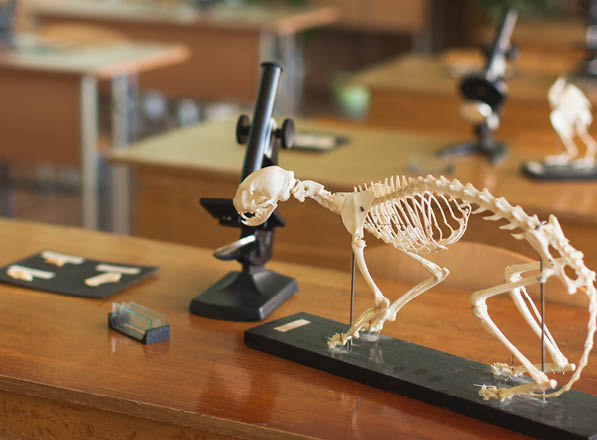Classes to Consider: Zoology (and the human connection)

The BIO 143: Zoology class at HFC provides a unique perspective on the evolutionary connections between organisms and the environments in which they live.
The class is also a lot of fun. It looks into the structure and function of various animal groups. There is an emphasis is on the evolution, embryology, and natural history of large animals to single-celled organisms. It also connects subjects like anatomy, physiology, genetics, and how animals are classified into categories.
“Students will explore major groups in the animal kingdom from the smallest groups all the way to the vertebrates such as amphibians, reptiles, birds, and mammals,” said HFC biology instructor Dr. Jessica Mahoney. “The course focuses on connections between the animal groups and shows how humans impact the rest of the animal kingdom.”
Learn more about this class from the video AND the text below the video, and sign up for this class today!
Meet Instructor Mahoney and get a preview of this class!
In this 10-minute video, Dr. Jessica Mahoney will teach you about animal teeth, skulls, and the evolution of human teeth. This is just one part of what you will learn in this exciting Zoology class. Sign up today!
More info and how to sign up
Only one section will be offered for the Fall 2022 semester, which will be taught by Mahoney. Lecture and lab work are coordinated. To sign up for the class, you should have already passed one of the following classes with a C or better grade:
- BIO 131
- BIO 134
- BIO 135
- BIO 150
- BIO 152
- If you have not taken any of the above BIO classes, talk to your advisor to find out about other options for enrolling.
What you will learn
After you complete this course, you should be able to:
- Design and conduct basic scientific investigations
- Develop solutions to problems through observing, reasoning, and investigations
- Use simple scientific instruments that help in observation and data collection
- Use simple metric measurement devices to gather data
- Develop science process skills to gather information and solve problems
- Create charts, graphs, and reports from data
- Use multimedia to support experiments
- Gather and understand scientific information from reference books and other sources
- Write and follow step-by-step instructions, formulas, flow diagrams, and sketches
- Discuss topics in groups by making clear presentations, summarizing what others have said, and asking for clarification
- Be aware of the need for scientific evidence when looking at data
- Generate questions about the physical and living world based on what you see
- Generate answers to questions that can be investigated scientifically
“I love when students are able to experience the topics we discuss in lecture with hands-on work that allows them to get up-close and personal with organisms they may have never even heard of,” said Mahoney. “The lab includes dissections, using microscopes to look at tissues or whole organisms, and investigating animal development and behaviors. Both live and preserved specimens are used in the lab, with attention to respect and care.”
For questions or more information, contact Mahoney at jlmahoney@hfcc.edu.